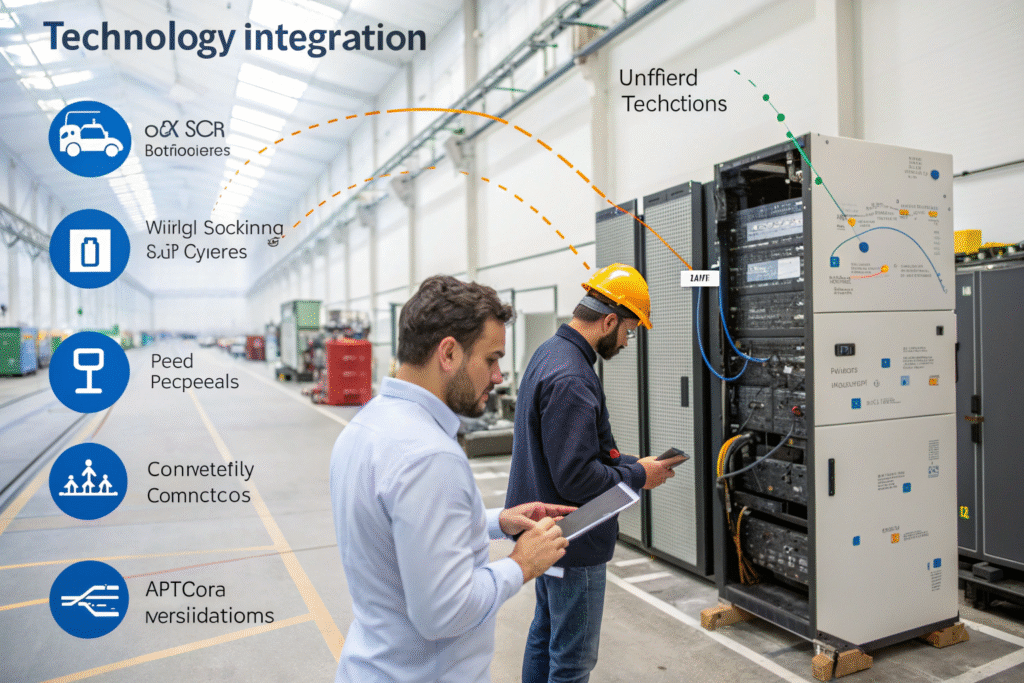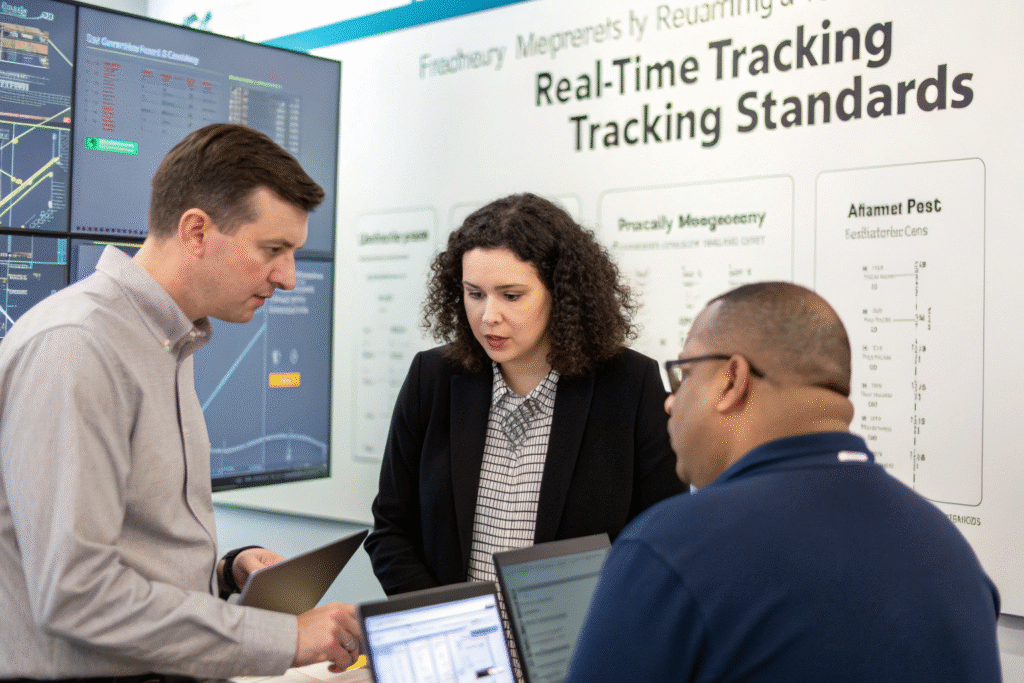Waiting for shipments from China without clear visibility creates anxiety and operational challenges. Many businesses struggle with the "black hole" period between shipment departure and arrival, unable to answer basic questions about cargo location or estimated delivery. Real-time tracking has evolved from a luxury to an essential supply chain capability.
You can get real-time tracking for your China cargo through advanced freight forwarder platforms, carrier integration APIs, IoT sensor technology, and mobile applications. These systems provide minute-by-minute visibility from factory collection to final delivery, transforming uncertainty into informed planning.
Let's explore the specific technologies and services that deliver true real-time tracking and how to implement them for your China shipments.
What tracking technologies provide true real-time visibility?
Real-time tracking has moved far beyond basic container number lookups on carrier websites. Modern systems combine multiple data sources to create comprehensive, minute-by-minute visibility throughout your shipment's journey from China.
The most advanced systems use GPS trackers attached to containers or pallets, IoT sensors monitoring location and conditions, carrier API integrations pulling direct operational data, port community system feeds, and satellite tracking for ocean vessels. These technologies work together to provide actual real-time updates rather than periodic status changes. For your China shipments, this means knowing exactly where your cargo is located, whether it's on a truck in Guangdong, a vessel in the Pacific, or a train crossing the United States.

How do IoT sensors enhance basic tracking?
IoT devices provide information beyond simple location:
- Real-time location tracking using cellular and satellite networks
- Temperature and humidity monitoring for sensitive goods
- Shock and impact detection alerting to rough handling
- Light exposure monitoring for light-sensitive products
- Door opening alerts providing security oversight
This granular data transforms tracking from "where is it" to "what condition is it in."
What makes carrier API integration superior to website tracking?
API integrations offer significant advantages:
- Automatic data updates without manual checking
- Direct system feeds from operational databases
- Integration capability with your business systems
- Proactive alerting when status changes occur
- Historical data access for analytics and reporting
These features make API integration the foundation of modern tracking systems.
How do freight forwarder platforms consolidate tracking information?
Modern freight forwarders provide unified tracking platforms that aggregate data from all supply chain partners into a single visibility dashboard. This consolidation solves the fragmentation problem of checking multiple carrier websites and receiving disjointed updates from different service providers.
Advanced forwarder platforms pull data from ocean carriers, airlines, trucking companies, rail operators, and port systems to create a seamless timeline of your shipment's journey. The best systems also incorporate customs clearance milestones, document status, and exception alerts. For your China shipments, this means one platform showing everything from factory collection in Shenzhen to final delivery in Chicago, with realistic ETAs based on actual vessel positions and port conditions.
![]()
What information should a comprehensive platform provide?
Complete tracking platforms include:
- Vessel/aircraft positioning with actual maps and routes
- Port operation status including gate-in and load/discharge times
- Customs clearance milestones showing progress through the process
- Document status indicating submission and approval states
- Exception alerts highlighting potential delays or issues
- Performance analytics comparing actual vs. planned timelines
This comprehensive approach provides true supply chain visibility rather than just transportation tracking.
How do predictive analytics enhance tracking value?
Advanced systems incorporate predictive capabilities:
- ETA calculations based on actual vessel speed and weather
- Delay prediction identifying potential issues before they occur
- Capacity forecasting alerting to potential equipment shortages
- Risk assessment evaluating likelihood of schedule disruptions
- Optimization suggestions recommending alternative routing when beneficial
These predictive features transform tracking from reactive monitoring to proactive management.
What mobile solutions enable on-the-go cargo monitoring?
Mobile tracking applications have become essential for busy professionals who need cargo visibility regardless of their location. The best mobile apps provide the same comprehensive functionality as desktop platforms while optimizing for smartphone use cases.
Leading freight forwarders offer mobile applications with push notifications for status changes, offline access to key shipment information, camera integration for document capture, and location-based alerts. For your China shipments, this means receiving immediate notification when your container gates in at Shanghai port, when the vessel departs, when it arrives in Los Angeles, and when customs clearance completes—all without actively checking status manually.
![]()
What mobile features provide the most value?
Essential mobile capabilities include:
- Push notifications for critical status changes and exceptions
- Offline access to shipment details and documents
- Camera integration for quick document capture and submission
- Location services providing context-aware information
- Voice commands for hands-free status checking
- Share functionality for collaborating with team members
These features make mobile tracking genuinely useful rather than just a scaled-down website.
How can you ensure mobile tracking security?
Security considerations for mobile tracking:
- Multi-factor authentication preventing unauthorized access
- Encrypted data transmission protecting sensitive information
- Remote wipe capability for lost or stolen devices
- Session timeouts automatically logging out inactive users
- Privacy controls limiting visibility of sensitive shipments
Proper security measures ensure business information remains protected.
What should you expect from real-time tracking services?
Understanding what constitutes true real-time tracking helps set proper expectations and evaluate service providers. The terminology "real-time" is often misused in logistics, so knowing what to look for ensures you get the visibility level your business requires.
True real-time tracking should provide updates at least hourly during active transportation, immediate notifications for exception events, predictive ETAs recalculated based on actual progress, and multimodal coverage across all transportation segments. For your China shipments, this means knowing within minutes when a container is loaded on a vessel, when it departs the port, and if it encounters weather delays during the ocean crossing. The system should also automatically alert you to potential delays based on port congestion or vessel performance.

What update frequency constitutes real-time tracking?
Reasonable update expectations include:
- Ocean shipments: Position updates every 1-2 hours during voyage
- Air freight: Status updates at each handling point
- Trucking: GPS updates every 15-30 minutes during transit
- Rail: Location updates at major tracking points
- Port operations: Status changes within 30 minutes of occurrence
These frequencies provide sufficient visibility for business decision-making.
How accurate are predictive ETAs in real-world conditions?
ETA accuracy depends on multiple factors:
- Ocean voyages: Typically ±12 hours for transpacific crossings
- Air freight: Usually ±4 hours for long-haul flights
- Trucking: Generally ±2 hours for regional deliveries
- Port operations: Often ±8 hours for vessel berthing
- Customs clearance: Approximately ±24 hours for processing
Understanding these variances helps set realistic expectations with your customers.
Conclusion
Real-time tracking for China shipments has evolved from a nice-to-have feature to an essential business tool that enables proactive supply chain management. By leveraging advanced freight forwarder platforms, IoT sensor technology, carrier API integrations, and mobile applications, businesses can achieve unprecedented visibility into their China supply chains. The most successful importers select partners based on their tracking capabilities, implement the technology systematically, and use the visibility gained to make better business decisions, improve customer service, and optimize their supply chain operations. With proper real-time tracking implementation, the anxiety of waiting for China shipments transforms into confident, informed planning based on actual shipment progress rather than estimated timelines.








